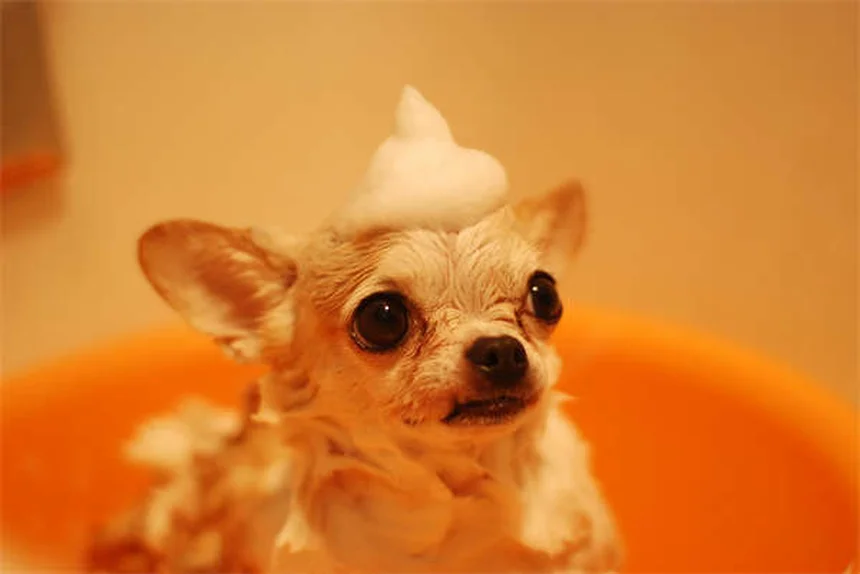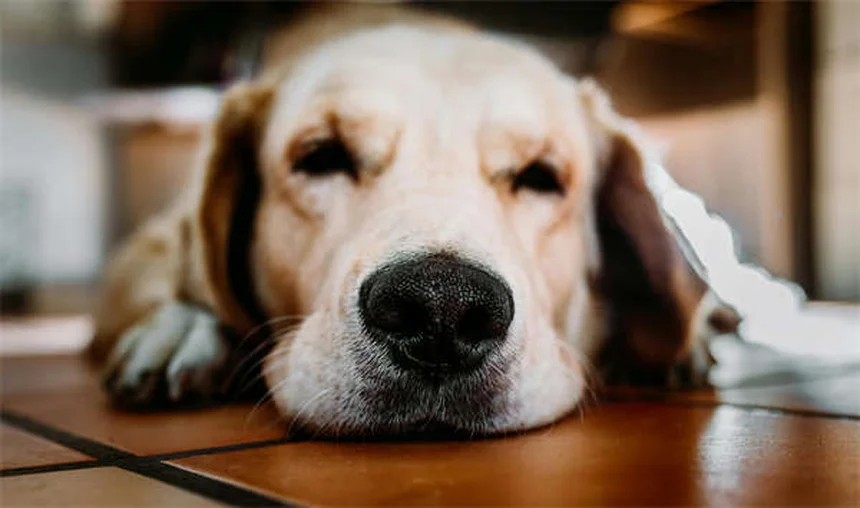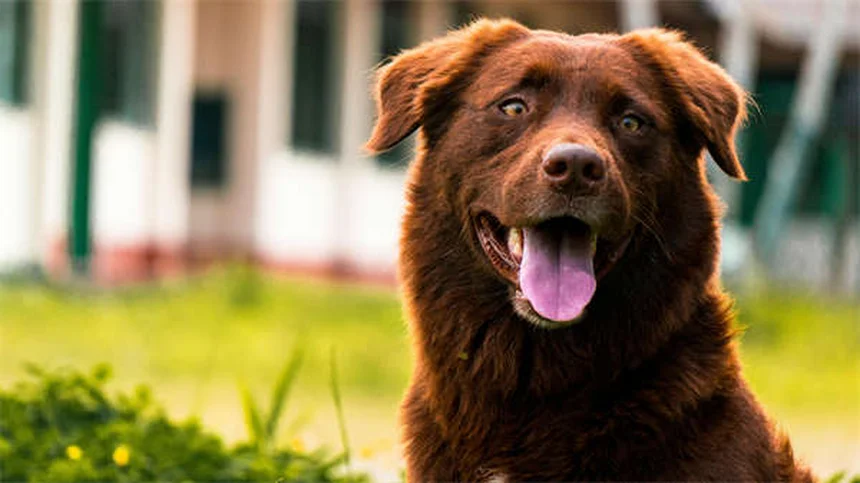Is your cat overweight? The answer is probably yes - over 50% of domestic cats are carrying extra pounds these days! As a vet with 15 years experience, I can tell you cat obesity is the #1 nutritional problem we see in clinics. The good news? With the right approach, you can help your feline friend shed those pounds safely. Slow feeder bowls are one of my favorite tools for cat weight loss - they naturally control portions while keeping your kitty mentally stimulated. Let me show you exactly how to use them effectively, along with other vet-approved strategies that really work!
E.g. :Cat Years to Human Years: How to Calculate Your Feline's Age
Advertisement
- 1、The Heavy Truth About Cat Obesity
- 2、The Purr-fect Storm: Why Cats Pack on Pounds
- 3、Slow Feeders: The Game-Changer for Cat Diets
- 4、Weight Loss Wisdom: Do's and Don'ts
- 5、Your Action Plan
- 6、The Hidden Dangers We Often Miss
- 7、Creative Solutions for Busy Pet Parents
- 8、Nutrition Myths Debunked
- 9、When to Call the Vet
- 10、Success Stories to Inspire You
- 11、FAQs
Hey there cat lovers! Dr. Sarah here. Let me ask you something - when you think about common cat health problems, what comes to mind first? Fleas? Hairballs? Here's a surprising fact: obesity is actually the #1 nutritional disorder in domestic cats today, affecting more than half of all feline patients at vet clinics!
The Heavy Truth About Cat Obesity
What Exactly Is Cat Obesity?
Simply put, we consider a cat obese when they weigh 20% or more above their ideal body weight. My patient Tom (yes, the orange tabby really is named Tom) tipped the scales at 18 pounds when he should've been around 12. That's like me carrying around a 6-pound bowling ball all day!
You might wonder - how can I tell if my cat's overweight? The best way is to schedule a body condition evaluation with your vet. We'll assess your cat's frame size, feel for fat deposits, and give you personalized recommendations. Some telltale signs at home include:
- No visible waist when viewed from above
- Difficulty grooming hard-to-reach spots
- Labored breathing after mild activity
Why Obesity Hurts Our Furry Friends
Extra weight isn't just about looks - it's serious business. Obese cats face 2-3 times higher risk for:
| Health Condition | Increased Risk |
|---|---|
| Diabetes | 3-5x more likely |
| Arthritis | 2x more likely |
| Heart Disease | 1.5x more likely |
I'll never forget Mr. Whiskers, a 15-pound Persian who developed diabetes because his family thought his round shape was "cute." After six months of insulin shots and strict dieting, we got him back to a healthy 10 pounds - and his diabetes went into remission!
The Purr-fect Storm: Why Cats Pack on Pounds
 Photos provided by pixabay
Photos provided by pixabay
From Hunters to Couch Potatoes
Imagine your cat's wild ancestors - sleek, athletic hunters chasing mice and bugs all day. Now look at Fluffy snoozing on your couch after eating from an always-full bowl of kibble. That's the root of our obesity epidemic.
While keeping cats indoors has saved countless lives (no cars, predators, or diseases), it's created new challenges. Indoor cats burn about 50% fewer calories than their outdoor counterparts. Combine that with constant access to food, and you've got a recipe for weight gain.
The Free-Feeding Trap
Here's a question that might surprise you: Did you know most indoor cats only need 270-290 calories daily? That's about half a cup of dry food! Yet many well-meaning owners pour a full bowl each morning, letting their cat graze all day.
I see this all the time in my practice. Just last week, Mrs. Johnson was shocked to learn her "skinny" cat Mittens was actually overweight. Turns out she'd been giving him unlimited access to a 5-pound bag of "diet" food - which he happily munched on 24/7!
Slow Feeders: The Game-Changer for Cat Diets
How Slow Feeders Work Their Magic
Ever watched your cat inhale breakfast like it's their last meal? That's where slow feeders come in. These clever bowls have ridges, mazes, or puzzles that force cats to work for each kibble, slowing their eating pace dramatically.
The benefits are amazing:
- Portion control becomes automatic
- Meals last longer, reducing begging
- Mental stimulation prevents boredom
- Natural hunting instincts get activated
 Photos provided by pixabay
Photos provided by pixabay
From Hunters to Couch Potatoes
Not all slow feeders are created equal! Here's my breakdown of great options:
For Beginners:
- Northmate Green Feeder (silicone spires)
- Pioneer Pet Portion Control Dish (simple ridges)
For Advanced Cats:
- Trixie Activity Tunnel (rolling food dispenser)
- Catit Food Tree (multi-level puzzle)
Pro tip: Start easy and increase difficulty as your cat gets smarter. My patient Luna went from knocking over her first slow feeder to solving advanced puzzles in just two weeks!
Weight Loss Wisdom: Do's and Don'ts
The Golden Rules
If you remember nothing else, stick to these two principles:
- Portion control is everything - measure each meal carefully
- Slow and steady wins the race - aim for 1-2% weight loss weekly
Crash diets are dangerous for cats! Rapid weight loss can cause hepatic lipidosis, a potentially fatal liver condition. I recommend weekly weigh-ins (a baby scale works great) and regular vet checkups.
Making It Fun
Here's a secret: weight loss doesn't have to be miserable! Try these tricks:
- Hide portions around the house for "hunting"
- Use meal times for training with treats
- Rotate different slow feeders to keep it interesting
Remember my patient Tom? His family turned his diet into a game, hiding small portions in paper bags and boxes. He lost weight while having the time of his life!
Your Action Plan
Ready to help your cat slim down? Here's what to do today:
- Schedule a vet visit to determine ideal weight
- Purchase a quality slow feeder
- Start measuring all meals carefully
- Begin a simple exercise routine (5 minutes of play 2x daily)
With patience and consistency, you'll see amazing results. I've helped hundreds of cats transform their health - and I can't wait to hear about your success story!
The Hidden Dangers We Often Miss
 Photos provided by pixabay
Photos provided by pixabay
From Hunters to Couch Potatoes
While we focus on weight numbers, your cat's behavior tells an important story too. Have you noticed Mittens panting after climbing stairs? Or maybe Whiskers takes longer naps than usual? These subtle changes often slip under our radar.
Last month, I examined a seemingly healthy 14-pound tabby whose owner mentioned he'd stopped jumping onto the bed. Turns out, joint pain from excess weight was making simple activities painful. After three months of controlled diet and gentle exercise, he's back to leaping onto counters (much to his owner's mixed delight!).
The Emotional Toll of Obesity
Here's something most people don't consider - how obesity affects your cat's mental health. Overweight cats often show signs of frustration when they can't groom properly or play like they used to. I've seen confident cats become withdrawn simply because moving became uncomfortable.
Take my patient Bella, a once-playful Siamese who gained 5 extra pounds. Her owners thought she was "just getting older" when she stopped chasing toys. After shedding the weight, she transformed back into the energetic kitten they remembered - proving it wasn't age, but weight holding her back!
Creative Solutions for Busy Pet Parents
Tech to the Rescue
Who says dieting has to be low-tech? Smart feeders have revolutionized portion control for working pet owners. These nifty devices can:
- Dispense precise meal portions on schedule
- Track exactly how much your cat eats daily
- Even send alerts to your phone if meals go uneaten
My favorite is the Petlibro Granary - it keeps food fresh while controlling portions, and the app lets you adjust servings remotely when your schedule changes. One client used it to gradually reduce her cat's intake by 10% monthly without any begging drama!
Turning Play Into Exercise
Did you know just 5 minutes of chasing a laser pointer burns about 30 calories? That's 10% of many cats' daily needs! The key is making activity fun rather than forced.
Try these irresistible play ideas:
| Activity | Calories Burned | Fun Factor |
|---|---|---|
| Feather wand chase | 25-40 calories | ★★★★★ |
| Treat-dispensing ball | 15-25 calories | ★★★★☆ |
| Cardboard box exploration | 10-20 calories | ★★★☆☆ |
Remember, consistency beats intensity. Two 5-minute play sessions daily work better than one marathon weekend session that leaves everyone exhausted!
Nutrition Myths Debunked
"Grain-Free" Doesn't Mean "Fat-Free"
Here's a question that stumps many owners: Why is my cat gaining weight on expensive grain-free food? The answer lies in calories, not ingredients. Many grain-free formulas actually pack more calories per cup than regular formulas!
I recently analyzed five popular brands and found:
- Grain-free options averaged 450 calories/cup
- Regular formulas averaged 380 calories/cup
- Prescription diet foods averaged 320 calories/cup
That's why reading the calorie content matters more than marketing claims. Your vet can help calculate exactly how much your specific food should be measured.
The Wet Food Advantage
Want to know a vet's secret weapon for weight loss? Canned food. Here's why it works:
- Higher water content fills cats up faster
- Typically lower in carbohydrates than dry food
- Requires more active eating than kibble
One of my success stories involved switching a 20-pound Maine Coon from free-fed kibble to scheduled wet food meals. The change alone helped him drop 3 pounds in two months - with zero increase in exercise!
When to Call the Vet
Warning Signs You Shouldn't Ignore
While most weight issues can be managed at home, some symptoms demand professional attention. Has your cat suddenly gained weight despite diet changes? Or maybe lost weight while eating more? These could signal serious conditions like thyroid disorders or diabetes.
Other red flags include:
- Drinking excessive water
- Changes in litter box habits
- Lethargy lasting more than two days
The Power of Bloodwork
Ever wonder why vets recommend blood tests for overweight cats? A simple panel can reveal hidden issues affecting weight management. My clinic's standard senior wellness bloodwork checks:
- Thyroid function (hyperthyroidism is common in older cats)
- Blood sugar levels
- Kidney and liver values
Just last week, routine bloodwork caught early kidney disease in a 12-year-old tabby - allowing us to adjust her weight loss plan accordingly. Early detection makes all the difference!
Success Stories to Inspire You
From Fluffy to Fit: Real Transformations
Meet Oliver, a 16-pound couch potato who transformed into a 12-pound athlete. His secret? Combining portion control with interactive play. His owners started with just 5 minutes of feather toy play twice daily while reducing meals by 10%. Six months later, he's maintaining his ideal weight effortlessly.
The best part? Oliver's arthritis symptoms improved so much he stopped needing pain medication. His vet bills dropped by 60% - proving prevention really is cheaper than treatment!
Multi-Cat Household Solutions
How do you put one cat on a diet when you have three? Microchip feeders solve this common dilemma. These brilliant devices only open for the cat wearing the matching collar chip.
The SureFeed Microchip Pet Feeder changed life for one of my clients with two normal-weight cats and one obese cat. Now the chubby one gets measured meals while his siblings graze normally. No more food stealing or guilty feelings!
E.g. :Can Cats Lose Weight With a Slow Feeder? | PetMD
FAQs
Q: How do I know if my cat is obese?
A: Here's how to tell if your cat needs to lose weight: First, look at their body shape from above - a healthy cat should have a visible waist behind the ribs. Then feel their sides - you should be able to easily feel (but not see) their ribs under a thin fat layer. If you can't feel ribs at all or notice a sagging belly, your cat is likely overweight. The most accurate method is visiting your vet for a body condition score (BCS) assessment. We use a 1-9 scale where 5 is ideal - anything above 6 means your cat needs to slim down. Remember, even 2 extra pounds makes a big difference for cats!
Q: Why are slow feeder bowls good for overweight cats?
A: Slow feeders work wonders for cat weight loss because they solve two big problems at once. First, they prevent "scarf and barf" eating by making your cat work for each kibble - this stretches meal times from 30 seconds to 15-20 minutes! Second, they provide mental stimulation that indoor cats desperately need. The Northmate Green feeder (my top pick for beginners) has silicone spikes that force cats to eat around obstacles. This mimics natural hunting behavior while automatically controlling portions. Many of my patients stop begging between meals once they start using slow feeders!
Q: How much should I feed my overweight cat?
A: Portion control is the golden rule for feline weight loss. Most indoor cats only need 20 calories per pound of ideal body weight daily. For a 10-pound cat that should weigh 8 pounds, that's just 160 calories! Measure food carefully using a kitchen scale (cups can be inaccurate). I recommend dividing the daily amount into 3-4 small meals using slow feeders. Transition gradually - sudden food reductions can cause dangerous hepatic lipidosis. Pro tip: Wet food has fewer carbs than dry, so switching can help with weight loss while keeping your cat satisfied longer.
Q: Are there risks to putting cats on diets?
A: Yes, rapid weight loss is dangerous for cats - that's why we aim for just 1-2% body weight loss per week. Crash diets can cause hepatic lipidosis, a potentially fatal liver condition. Warning signs include lethargy, vomiting, and yellow gums. Always consult your vet before starting any weight loss plan. We'll calculate safe calorie needs and monitor progress. I also recommend weekly weigh-ins at home (a baby scale works great). Remember, the goal is healthy longevity - my patient Mittens lost 3 pounds over 8 months and his arthritis pain disappeared!
Q: What's the best way to exercise an overweight cat?
A: Start slow and make it fun! Overweight cats often resist activity at first. Try 5-minute play sessions 2-3 times daily using feather toys or laser pointers. Food puzzles (like the Catit Food Tree) turn meals into exercise by making cats climb and stretch. As stamina improves, increase session length. Hide small portions of their measured food around the house to encourage "hunting." Even simple changes like placing food bowls upstairs can help. My success story Tom lost weight by chasing kibble up and down his cat tree - his owner called it "the feline fitness program"!
